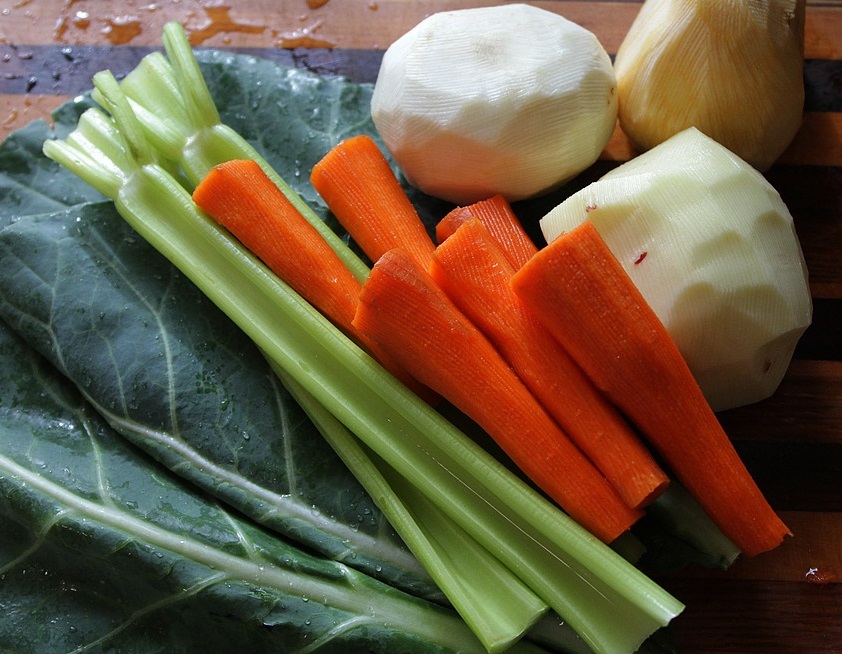Veggies are nutritional powerhouses. A potent source of vitamins, minerals, and antioxidants, veggies provide a huge amount of nutritional clout for your Calorie count! Unfortunately, vegetables are also the one class of food that remain under-consumed amongst Americans and world-consumers.

While most of us consume more than our fair share of grain, meat, dairy, fat, and added sugar, few Americans meet the daily recommended intake for fruits and vegetables.
Compounding this issue is the matter of vegetable choice: most – the world over – don’t gravitate towards leafy greens, broccoli, or brussels sprouts.
Though most consumers would readily agree that French fries, and, indeed, all fried potato products, onion rings, and the like, do not qualify as actual vegetables, many Americans continue to turn a blind eye towards high-starch vegetables, to the detriment of their overall health. Vegetables like corn, peas, potatoes, sweet potatoes, acorn squash, butternut squash, plantains, and parsnips all fall into the category of high-starch vegetables.
What is a high starch vegetable?
While still truly vegetables in the sense of the word, starchy vegetables contain more carbohydrate than other vegetables. True to their moniker, the higher starch content also means a higher Calorie content, which may inhibit the maintenance of a healthy body weight.
Most consumers scarcely consider vegetables when considering total Caloric intake- this is because vegetables are typically so low in Calories that we view them as “freebies”.
And while this is fine for non-starchy vegetables like broccoli, salad greens, and cucumbers etc., failing to recognize the high Caloric content of potatoes, peas, corn, and other starchy vegetables can yield disappointing results on the scale.
A cup of cooked potato or sweet potato (both starchy vegetables), for example, contains roughly 200 Calories- the same number of Calories as a cup of cooked pasta or rice. By comparison, broccoli (a non-starchy vegetable) contains a mere 30 Calories per cup.
Consistently consuming high-carbohydrate vegetables may impede blood sugar control, setting the stage for high blood sugar, insulin resistance, and increase fat deposits in the liver. Prediabetes and Non-alcoholic Fatty Liver Disease- two conditions related to the overconsumption of carbohydrate- are often caused by a disproportionately high consumption of carbohydrate.
Given that 1 in 4 Americans is affected by these conditions, controlling carbohydrate consumption should be a high priority for any weight or health-conscious consumer, and indeed is a MUST!
Why are low-starch vegetables a healthier option?
Beyond providing superior nutritional content through high vitamin and mineral content, the low Calorie content of non-starchy vegetables helps promote a healthy body weight by promoting satiety without dramatically increasing Caloric intake. By focusing on low-starch vegetables as filler foods, weight-conscious consumers are better able to maintain a healthy weight without feeling unnecessarily hungry.
To reap the full rewards of the produce section, choose low-starch options whenever possible, and prepare your veggies without any additional fat, sauce, dressing, or dip whenever possible. Remember than even healthy fats-like olive oil or vinaigrette- still contribute Calories that may interfere with weight loss if not accounted for in your daily Caloric intake.
Produce Picks
While navigating the grocery store can be tricky, the produce section is a relatively easy shopping experience when armed with a dash of knowledge. Consult the following high and low starch guide on your next trip to the supermarket.
Beware the bad guys- Avoid these high-starch options, unless you plan on using them in place of a grain.
● Potatoes
● Sweet Potatoes
● Yams
● Plantains
● Butternut Squash
● Acorn Squash
● Peas
● Corn
Align yourself with the right side of the veggie patch- Choose these low-starch options for a low-Calorie, high-fiber filler for meals and snacks.
● Broccoli
● Salad Greens
● Zucchini
● Asparagus
● Bell Peppers
● Mushrooms
● Onions
● Garlic
● Carrots
● Cabbage
● Cucumbers
● Tomatoes
● Brussels Sprouts
● Bok Choy
● Radishes
● Herbs
